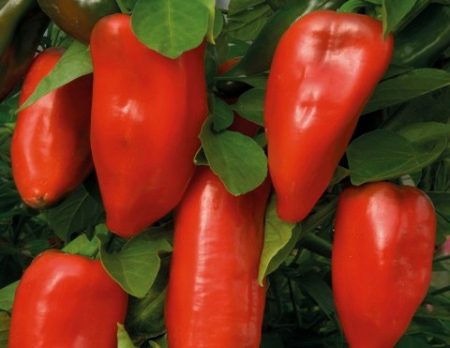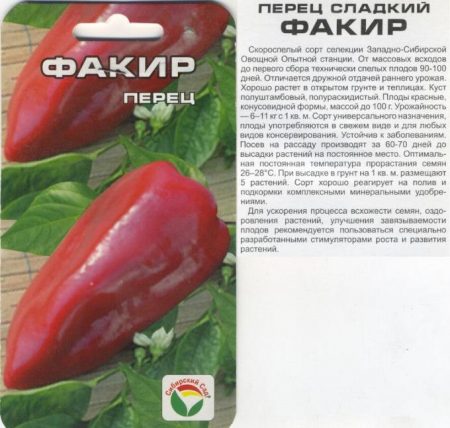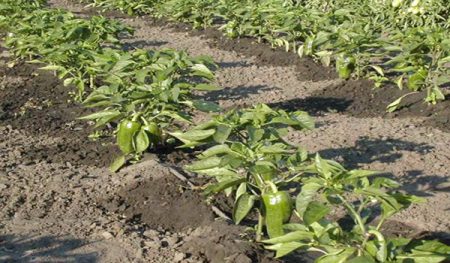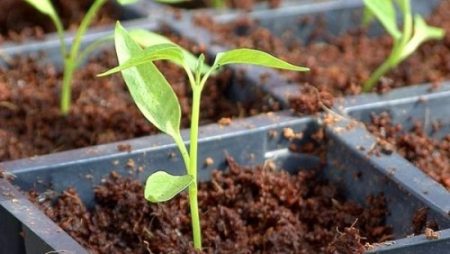 Sweet pepper has long been a regular on our tables - without this beloved tasty and healthy vegetable, it is impossible to imagine everyday life.
Sweet pepper has long been a regular on our tables - without this beloved tasty and healthy vegetable, it is impossible to imagine everyday life.
Content
Varieties of Sweet Peppers
To date, a huge number of varieties of this healthy vegetable have been bred. They are early ripe, mid-ripening and late ripening. Bell pepper has the usual yellow, red, green and orange colors. But there are specimens with white or purple fruits.
Description of the cultivar Fakir
This variety of bell pepper belongs to the early ones; it is ideal for cultivation in the middle latitudes of Russia. The period from the appearance of seedlings to the onset of the appearance of the fruit is 90-120 days. In the process of ripening, the fruit has a yellow color, but eventually acquires a red color. The shape of the vegetable is conical with a sharp end and slightly elongated, the average weight of the pepper is 60-65 grams. A distinctive feature of the variety is a very dense peel of the fruit, thanks to which they perfectly retain their presentation during transportation and light frosts. "Fakir" can be grown both in open ground and in greenhouses. The taste of ripe pepper is excellent: it can be used fresh, harvested for the winter and cook various dishes from it. It is worth noting that “Fakir contains” a large number of vitamins and minerals.

Harvest time
At that time, when the fruits turn yellow (technical maturity), the crop can be sold or sold. At this time, the fruits tolerate transportation and storage very well. But it is worth considering the fact that during the period of technical maturity, taste is lower than in the period of ripeness.
Productivity
Sweet pepper "Fakir" refers to undersized varieties of bell pepper, but, despite this, the variety is famous for its high yield. The height of the bushes during fruiting reaches only 50 cm, but they are all literally strewn with bright peppers. If the vegetable is grown in an open garden, up to 3 kg of fruits can be obtained from one bush. And in greenhouse conditions, the yield reaches 8 - 10 kg.
Selection of sweet pepper varieties when planting
When choosing seeds, it is necessary to take into account some important factors affecting growth and yield, namely:
- Climatic zone and weather conditions of cultivation.
- Tall or undersized varieties.
- Desired color and shape of the fruit.
- Type of variety (early ripening - late ripening).
- Type of planting (open bed or greenhouse).
Tall varieties are best planted if the bed is large. If there is not much space, you should focus on low-growing varieties. When buying seeds, the name of the variety and growing conditions must be indicated on the packaging. "Fakir" will feel great in small beds and will not require the garter of the stem during fruiting, as it belongs to low-growing varieties.

Preparing seeds for sowing
To accelerate the appearance of the first seedlings, the seeds are soaked in water at room temperature for a couple of days. At the same time, it is useful to hold them for some time in a weak solution of potassium permanganate for disinfection. Before planting, rinse the seeds with water and dry.
Next, soil is poured into prepared containers, compacted and well watered. Lay the seeds on moist soil and cover with dry soil on top.
It is important to water the first layer of soil, and leave the top one dry. This will allow moisture to evaporate very slowly, and through the dry top layer air will flow well to the seeds.
After sowing the seeds, the containers are covered with transparent material (glass or bottoms from plastic bottles) and put in place, well lit by the sun. During seed germination, sometimes it is necessary to open the covers to ventilate and dry the condensate. After emergence of seedlings, hold the cover for another 3 to 4 days, increasing the frequency of ventilation, and then remove them.
https://youtu.be/aMWKwLvDDH8
Dive seedlings
When the first leaves appear on the seedlings, it is transplanted into containers with a volume of about 0.5 l. At this time, the root resembles an elongated shaft, does not have thin roots and will tolerate transplanting well. Diving at a later time can damage the root system, and the sprouts will take longer.
When replanting, fill the containers with soil and carefully place seedlings in it. Keep containers in a well-lit area, as pepper loves warmth and light. Watering should be moderate: do not overmoisten the soil.
Planting sweet pepper in permanent soil
Planting seedlings on the beds is carried out at a time when the time of frost has passed - approximately at the end of February. The soil before planting must be fertilized with humus at the rate of 15 kg / m2, fluff and prepare pits at a distance of about 50 cm from each other. To get the expected harvest, you need to choose a place where vegetables from the nightshade family have not grown for 3 years, and also well-lit by the sun.

It is advisable not to water the containers in which the seedlings are located for several days - this will allow less damage to the roots when replanting. Pour prepared pits on the bed with water and move seedlings with clods of earth into them. Sprinkle with dry earth. Final watering is not required.
If the sun is too intense during transplanting, the seedlings must be shaded for several days to prevent burns.
Garden Care
Water the emerging plant should often, but not abundantly. Waterlogging and lack of moisture lead to the falling of ovaries of flowers. If you tie too many flowers, you can pinch some. In order to avoid the appearance of dark spots on the fruits, it is necessary to add potassium nitrate to the soil and observe the schedule for fertilizing with mineral and organic fertilizers.
Reviews
Judging by the reviews of experienced vegetable growers, this variety has established itself as unpretentious and does not require intensive care. With proper watering and regular feeding, it gives an excellent harvest and has an excellent taste.
Also find out Victoria pepper characterization.




 Calorie pepper stuffed with meat and rice - BZHU per 100 grams
Calorie pepper stuffed with meat and rice - BZHU per 100 grams Gorky pepper - the best varieties for open ground
Gorky pepper - the best varieties for open ground Hot pepper seeds - the best varieties for open ground and reviews
Hot pepper seeds - the best varieties for open ground and reviews Capsicum tincture for hair - how to use and reviews
Capsicum tincture for hair - how to use and reviews